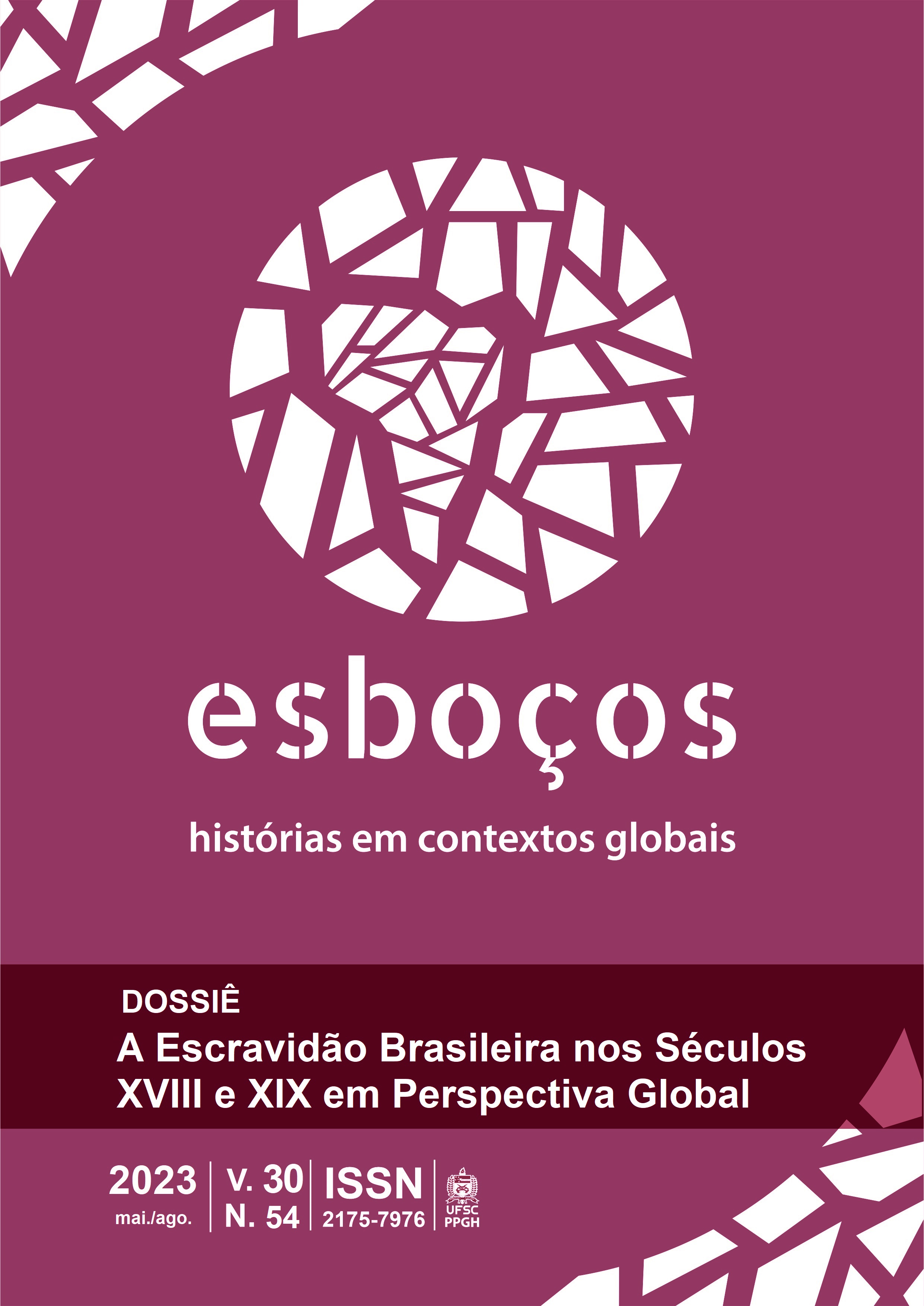A escravidão brasileira nos séculos XVIII e XIX em perspectiva global
DOI:
https://doi.org/10.5007/2175-7976.2023.e97835Abstract
Apresentação do dossiê.
References
FERREIRA, Roquinaldo. Cross-Cultural Exchange in the Atlantic World: Angola and Brazil during the Era of the Slave Trade. New York: Cambridge University Press, 2012.
FLORENTINO, Manolo. Em costas negras. Uma história do tráfico atlântico de escravos entre a África e o Rio de Janeiro (séculos XVII e XIX). Rio de Janeiro: Arquivo Nacional, 1997.
MAMIGONIAN, Beatriz G. Africanos livres: a abolição do tráfico de escravos no Brasil. São Paulo: Cia das Letras, 2017.
MARTINS, Roberto B. Crescendo em silêncio. A incrível economia escravista de Minas Gerais no século XIX. Belo Horizonte: ICAM/ABPHE, 2018.
MOREIRA, Paulo R. S. Qualificados novos por estarem a dois meses no território do Brasil e não saberem falar nada a língua portuguesa: charqueadas e tráfico ilegal de africanos (Bahia – Pelotas - Brasil Meridional, 1834). Revista Brasileira de História & Ciências Sociais, [s.l.], v. 11, v. 22, p. 133-161, 2019.
SLENES, Robert W. Os múltiplos de porcos e diamantes: a economia escrava de Minas Gerais no século XIX. São Paulo. Estudos Econômicos, [s.l.], v. 18, n. 3, p. 449-495, 1988.
VERGER, Pierre. Fluxo e refluxo: do tráfico de escravos entre o Golfo do Benin e a Bahia de todos os santos – dos séculos XVII a XIX. Salvador: Corrupio, 2002.
Downloads
Published
How to Cite
Issue
Section
License
Copyright (c) 2023 Clemente Penna, Marcelo Santos Matheus, Melina Teubner

This work is licensed under a Creative Commons Attribution 4.0 International License.
Esboços: histories in global contexts adopts an Open Access policy and it is licensed under a Creative Commons Attribution 4.0 International License (CC-BY 4.0). Authors will be asked to sign an open access license agreement before publication.
Authors who publish with this journal agree to the following terms:
- Authors grant the journal Esboços: histórias em contextos globais (ISSN 2175-7976) right of first publication with the work simultaneously licensed under a Creative Commons Attribution 4.0 International License (CC-BY 4.0).
- This license allows users to remix, transform, and build upon the material, on the condition of giving acknowledgement of the work's authorship and initial publication in this journal.
- 3.Authors are able to enter into separate, additional contractual arrangements for the non-exclusive distribution of the journal's published version of the work (e.g., post it to an institutional repository or a personal website, or publish it as a book chapter or a translation).

This work is licensed under a Creative Commons Attribution 4.0 International License.







